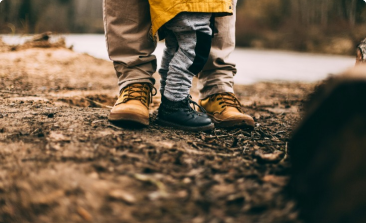Description
After a baby’s first birthday, the growth rate begins to slow down. Your baby is now a toddler and very active. If your toddler can’t walk yet, they will soon. Hiking offers opportunities to explore previously inaccessible areas and to practice independence.
What can a 1-year-old baby do at this age?
As your baby continues to grow, you will find new and exciting skills developing. While babies can progress at different rates, the following are some of the most common milestones your baby may reach in this age group:
- Walks alone at 15 months, then starts running
- Can stop, crouch, and stand again
- Sits on a small stool or chair
- Climbs stairs while holding on
- Dances with music
- Plays with push-and-pull toys
- Can build towers out of blocks
- Throws a ball over the hand
- Put together two or three-piece puzzles
- Scribbles with chalk or pencil and can imitate drawing a straight line or circle
- Feeds mainly on the fingers
- Begins to spoon feed
- Drinks well from the cup
- Can assist with dressing and may be able to remove simple clothing (e.g. clothing without buttons or zippers)
- The first molars appear
- Take a nap in the afternoon
- Able to sleep 10 to 12 hours at night
What can a 1-year-old baby say?
Language development is very exciting for parents as they watch their babies grow into social beings who can interact with others. While each baby develops language at their own pace, the following are some of the most common milestones in this age group:
- Mimics animal sounds and noises
- By the age of one year, he will be able to say four to six simple words
- At 18 months you say 10 to 15 words
- At 18 to 24 months, uses simple phrases or two-word phrases (e.g., “Mommy up”)
- By age 2, says 100 or more words
- Asks “What is…?”
- Uses negative expressions like “don’t want anything”
What does a 1-year-old baby understand?
Around 18 months, children begin to understand symbols – the relationship between objects and their meaning. While children may progress at different rates, the following are some of the common milestones that children in this age group can achieve:
- Wave goodbye and play Pat-a-cake
- At 18 months, he understands simple questions and commands like “Where’s the ball?”
- At 24 months, he understands two-step questions and commands like “Go to your room and get your shoes.”
- Understands object permanence (a hidden object is still there)
- Understands the cause-and-effect relationship better
- Likes exploring drawers and boxes to see what’s inside
- Mock play increases (i.e. can imitate housework or feed a doll)
- Recognizes one’s own face in the mirror
- Can point to body parts (e.g. nose, hair, eyes) when prompted
- Begins to understand the use of certain objects (e.g. the broom is used to sweep the floor)
- Can ask for parental help by pointing
Sensory development of the 1-year-old baby: touch
Your baby will either crawl or walk to explore their newfound freedom. While it’s important for them to experience different textures and finishes in your home, make sure there aren’t any dangerous objects that can injure them. Beware of small objects they could choke on as they are at a stage of putting objects in their mouths.
Once these safety precautions are in place, let your 1-year-old walk around and feel different objects. You can let your baby feel the blur of a ceiling or a rough concrete surface. Let them mash different foods like blueberries in their hands and discover which items feel the same or have different textures.
What can my 1-year-old baby taste and smell?
By the age of 1 year, your baby will be experimenting with different foods and developing food preferences. The best way to expand their food range is to keep feeding them new foods with different tastes and smells. You may not eat it or may not like it at first, but keep trying. It can take several attempts for a baby to like a new food.
Encourage your baby to explore the surroundings and experience different scents such as cute flowers and rain.
How does a 1-year-old baby interact with others?
When children start walking, they may show independence and try to distance themselves further from their parents. Separation anxiety and fear of strangers may subside and then return after about 18 months. While every child is unique and will develop different personalities, the following behavioural traits that may be present in your child are common:
- Plays alongside others without interaction called parallel play
- May begin to cling to parents around 18 months
- May begin to say “no” to commands or needs more often
- May have outbursts of anger
- May use a blanket or stuffed animal as a security object in place of the parent
You might also like
Parenting Updates: Subscribe Now!

ALL UPDATES
Go from pregnancy to adolescents with our email bulletins, loaded with reasonable, modern data about bringing up youngsters and taking care of yourself as a parent.
SUBSCRIBE NOW
MOVIE REVIEWS
Find the best motion pictures for your family with our youngster amicable surveys. Search new deliveries and more seasoned motion pictures by age, rating and type.
SUBSCRIBE NOW
MENTAL HEALTH RESOURCES
Is it safe to say that you are an expert working with families? Get data about kid, adolescent and parent psychological well-being and prosperity.
SUBSCRIBE NOW











































